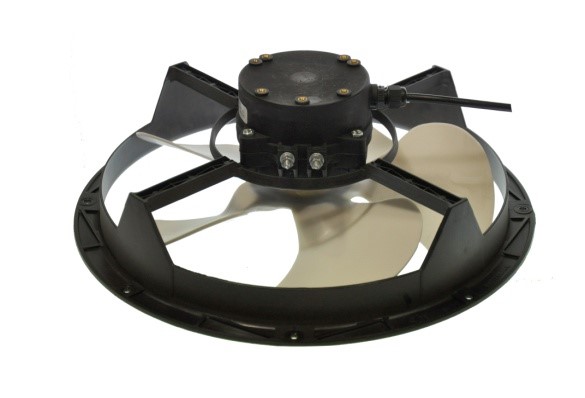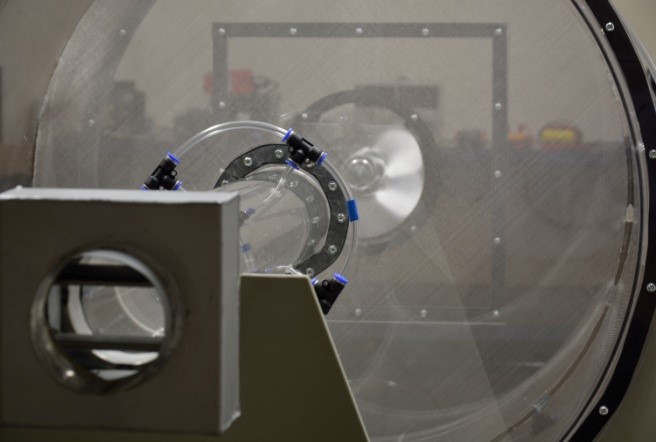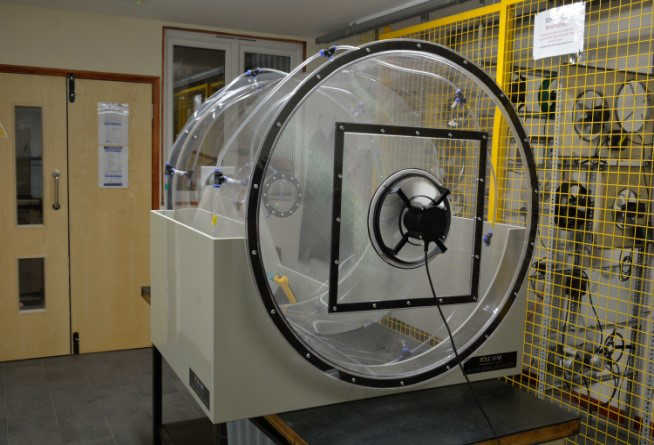15 April 2016
|
Mike Cook from Pole Star Products and Dr Jun Yao from the University of Lincoln's School of Engineering explain their research into achieving energy savings with fan and motor combinations.
Getting the right airflow from a fan is critical to the overall performance of any refrigeration equipment. Manufacturers run many exhaustive tests to ensure that the correct motor power, speed, fan blade diameter and pitch are selected to give the best overall performance for their piece of equipment. With the introduction of the energy saving EC (electronically commutated) fan motors, many companies are retro-fitting stores refrigeration equipment to achieve much improved energy consumption but are they fitting the correct fan/motor combinations in line with the original equipment design?
Getting the right airflow from a fan is critical to the overall performance of any refrigeration equipment. Manufacturers run many exhaustive tests to ensure that the correct motor power, speed, fan blade diameter and pitch are selected to give the best overall performance for their piece of equipment. With the introduction of the energy saving EC (electronically commutated) fan motors, many companies are retro-fitting stores refrigeration equipment to achieve much improved energy consumption but are they fitting the correct fan/motor combinations in line with the original equipment design?
With fan exchange & compatibility in mind, Pole Star Products Limited has enlisted the help of (MEng) Mechanical Engineering students at The School of Engineering, University of Lincoln, to build a test facility capable of producing accurate performance data and detailed fan curves. Armed with this data, customers can be sure that the original fans will be replaced with units giving very similar airflow as specified by the original manufacturer. Figure 1 represents typical fan components in service supplied by Pole Star Products Limited.
The School of Engineering at the University of Lincoln has developed a type of innovative research informed teaching method to support students for their industrial curriculum development by undertaking industrial challenging projects, i.e. liquid nozzle injection (figure 2). The state of art engineering facility further enhances the quality of school teaching/research (figure 3).
Under the guidance of Dr. Jun Yao, a specialist in computational fluid dynamics and Dr. Rebecca Margetts, an expert in dynamics and vibration, the 4th year Masters students Jordan Westoby and Samuel Ward have developed a small sized subsonic wind tunnel/test rig, which can meet the requirements of airflow measurement requested by Pole Star Products Limited.
The fundamental of wind tunnel design concept is acquired from international standards set up by American National Standards Institute (ANSI) and the European ISO standards. Figure 4 illustrates the wind tunnel/test designed by Samuel and Jordan at the School of Engineering, University of Lincoln.
The fundamental of wind tunnel design concept is acquired from international standards set up by American National Standards Institute (ANSI) and the European ISO standards. Figure 4 illustrates the wind tunnel/test designed by Samuel and Jordan at the School of Engineering, University of Lincoln.
The open circuit axial-flow fan type of the test “Rig” is constructed from clear Perspex with Pitot rings mounted in 3 locations around the “Rig” to monitor the pressure distributions.

Air settling means are installed inside the main chamber and an air damper fitted to the outlet to adjust internal pressure. Using a transparent material in the design enables the students to introduce “Smoke” which will give the students the chance to visually study airflow movement. Installed fans will also be monitored for electrical performance to give accurate power consumption.
On completion of the wind tunnel/ test rig experimental measurements, Computational Fluid Dynamics (CFD) will be employed to quantify detailed flow structures for the wind tunnel system and performance assessment.
Conclusively, the new facility will give Pole Star Products the ability to thoroughly test new products (specifically EC fans) ensuring that they meet the specifications of the original cabinet manufacturers. Working with the University of Lincoln’s School of Engineering students enables them to put into practice some of the theories learned and helps them to “get a feel” for working in industry.
On completion of the wind tunnel/ test rig experimental measurements, Computational Fluid Dynamics (CFD) will be employed to quantify detailed flow structures for the wind tunnel system and performance assessment.
Conclusively, the new facility will give Pole Star Products the ability to thoroughly test new products (specifically EC fans) ensuring that they meet the specifications of the original cabinet manufacturers. Working with the University of Lincoln’s School of Engineering students enables them to put into practice some of the theories learned and helps them to “get a feel” for working in industry.
Content continues after advertisements














